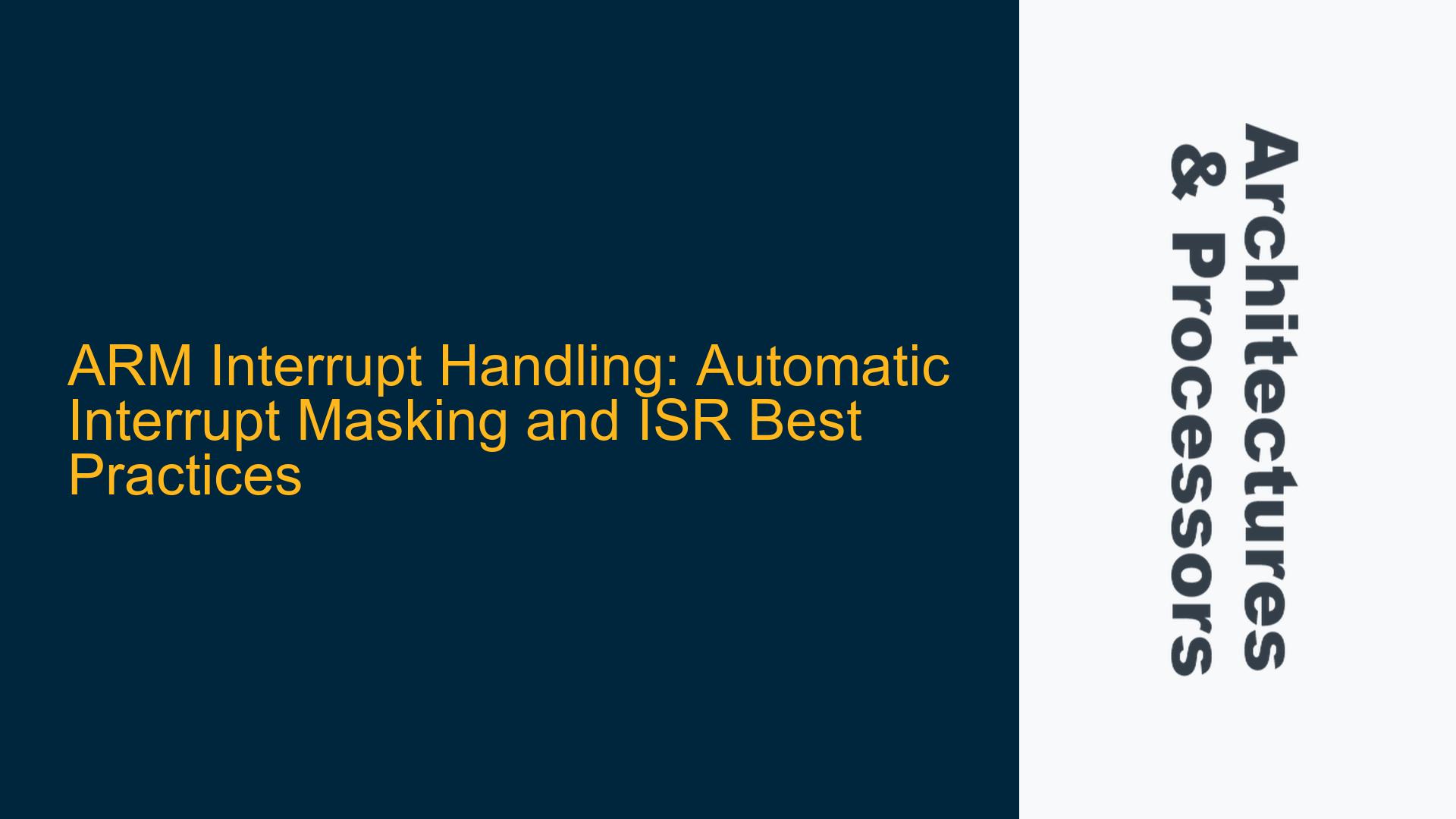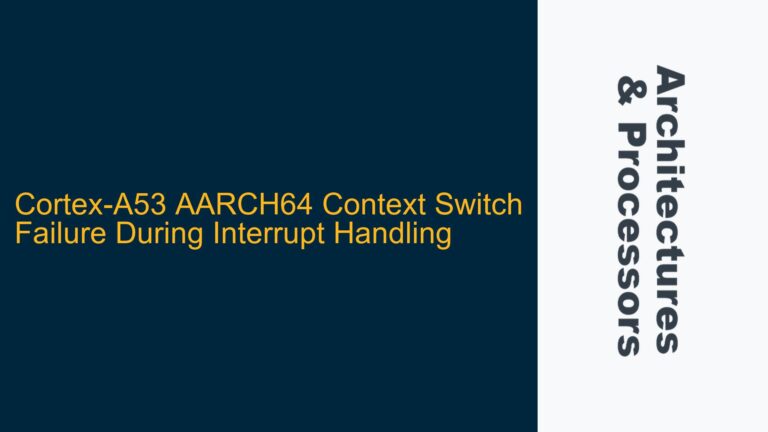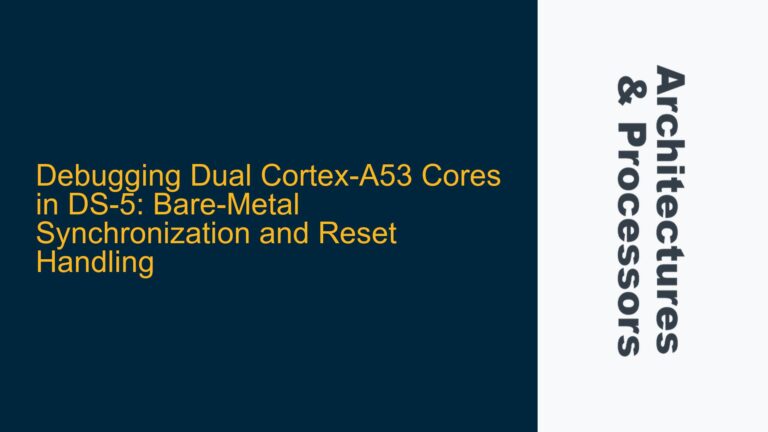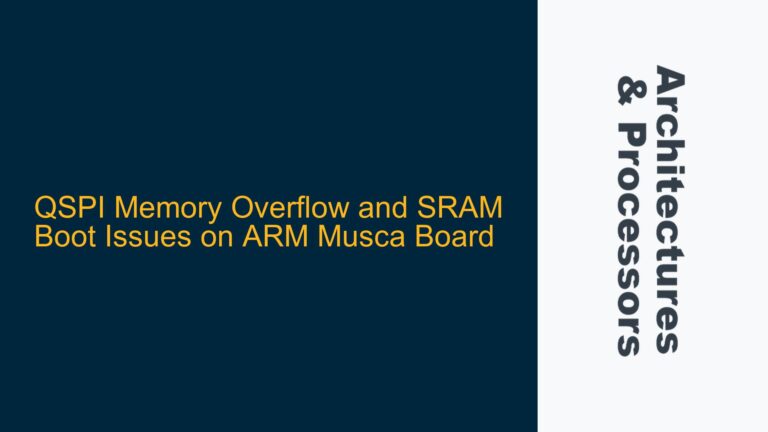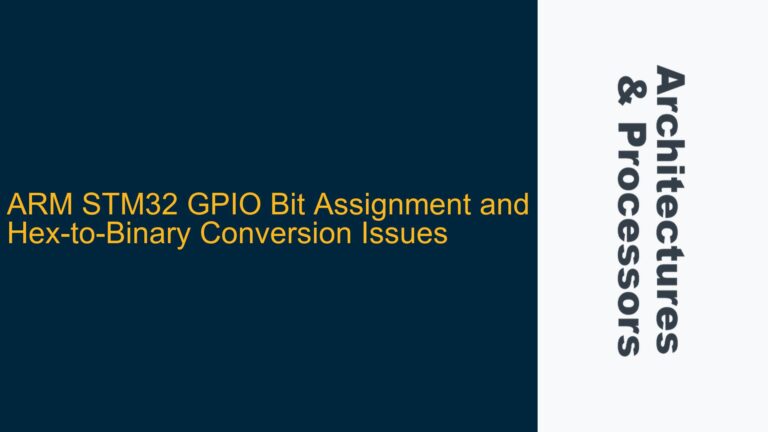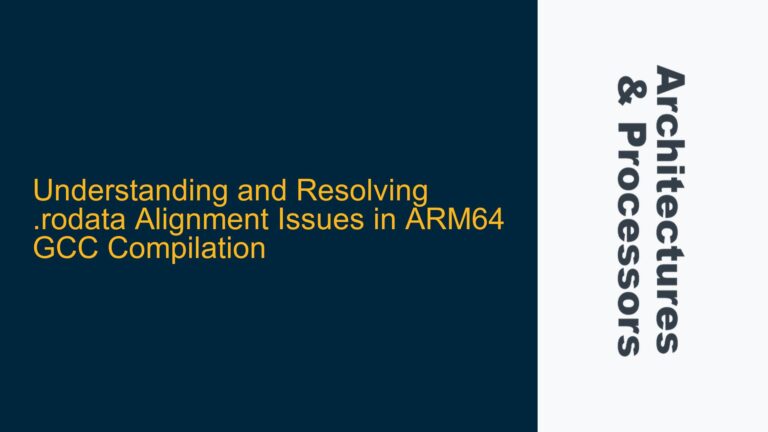ARM Cortex-A/R Profile Interrupt Masking Behavior During Exceptions
When an interrupt exception occurs on ARM Cortex-A or Cortex-R profile processors, the processor automatically modifies the Current Program Status Register (CPSR) in AArch32 or PSTATE in AArch64 to mask further interrupts. This automatic masking is a fundamental aspect of ARM’s exception handling architecture designed to ensure proper interrupt servicing and system stability.
In ARMv7-A architecture, when an IRQ exception occurs, the processor enters IRQ mode and sets the I bit in CPSR, which masks all IRQ interrupts. Similarly, for FIQ exceptions, the F bit is set to mask FIQ interrupts. This automatic masking occurs before any instruction in the exception handler is executed, providing an atomic entry point for interrupt service routines.
The automatic interrupt masking behavior varies between ARM profiles:
- Cortex-A/R profiles: Automatic masking of same or lower priority interrupts
- Cortex-M profiles: Configurable nesting with priority-based preemption
The automatic masking persists until explicitly modified by software, typically through manipulation of CPSR or using specific instructions like CPSIE. This design ensures that the interrupt service routine (ISR) can execute critical sections without being interrupted by the same or lower priority interrupts.
Interrupt Source Identification and Clearance Timing Considerations
The timing of interrupt source identification and clearance plays a critical role in ARM interrupt handling. When an interrupt occurs, the processor vectors to the appropriate exception handler, but the peripheral interrupt source remains active until explicitly cleared in the peripheral’s interrupt status register.
During the period between interrupt assertion and source clearance, several scenarios can occur:
- If the interrupt source is not cleared before exiting the ISR, the processor will immediately re-enter the interrupt handler, creating an infinite loop
- Peripheral hardware may continue to assert the interrupt signal if the underlying condition persists
- Multiple interrupts may be pending in the interrupt controller, requiring proper prioritization
The ARM Generic Interrupt Controller (GIC) architecture adds complexity to this process. The GIC maintains interrupt state independently of the processor’s exception handling, requiring software to properly interface with both the GIC and the peripheral’s interrupt control registers.
In systems using nested interrupts, the timing of interrupt source clearance becomes even more critical. Premature clearing of interrupt sources can lead to missed interrupts, while delayed clearing can cause unnecessary interrupt latency or priority inversion.
Implementing Robust Interrupt Handling with Proper Masking and Clearance
To implement robust interrupt handling on ARM Cortex-A/R processors, developers must follow a structured approach that accounts for both automatic and manual interrupt masking:
-
Exception Entry Sequence:
- Processor automatically masks interrupts (sets I/F bits in CPSR)
- Save essential context (AAPCS registers)
- Identify interrupt source through GIC or peripheral registers
-
Interrupt Service Routine Implementation:
- Clear interrupt source at peripheral level
- Handle interrupt-specific processing
- Optionally re-enable interrupts using CPSIE if supporting nested interrupts
- Ensure proper memory barriers for shared resource access
-
Exception Exit Sequence:
- Restore saved context
- Execute exception return instruction (e.g., SUBS PC, LR, #4)
- Processor automatically restores CPSR, potentially unmasking interrupts
For systems requiring nested interrupts, additional considerations include:
- Proper prioritization of interrupt sources
- Selective interrupt masking using GIC interfaces
- Context saving for nested exceptions
- Prevention of stack overflow in deep nesting scenarios
The following table summarizes key differences in interrupt handling between ARM profiles:
| Feature | Cortex-A/R Profile | Cortex-M Profile |
|---|---|---|
| Automatic Masking | IRQ/FIQ bits in CPSR | BASEPRI register |
| Nesting Support | Manual configuration | Hardware priority-based |
| Exception Entry | Mode switch | Stack-based |
| Interrupt Clearance | Peripheral + GIC | NVIC-based |
| Context Saving | Manual (AAPCS) | Automatic (hardware) |
Proper implementation of ARM interrupt handling requires careful consideration of these architectural features and their implications on system behavior. Developers must ensure that interrupt sources are cleared at the appropriate time, considering both peripheral and interrupt controller requirements. The use of memory barriers and proper context management is essential for maintaining system stability, especially in complex systems with multiple interrupt sources and shared resources.
When implementing nested interrupt support, additional precautions must be taken to prevent race conditions and ensure proper prioritization. This includes careful management of the GIC interfaces and proper sequencing of interrupt enable/disable operations. The use of atomic operations and memory barriers becomes particularly important in these scenarios to prevent subtle timing-related bugs.
For systems requiring deterministic interrupt response times, developers should carefully analyze the interrupt handling path, including:
- Interrupt controller latency
- Context saving/restoration overhead
- Memory access timing for interrupt status registers
- Potential blocking in higher-priority interrupts
By understanding and properly implementing these interrupt handling mechanisms, developers can create robust and efficient embedded systems on ARM Cortex-A/R processors that meet real-time requirements while maintaining system stability.
